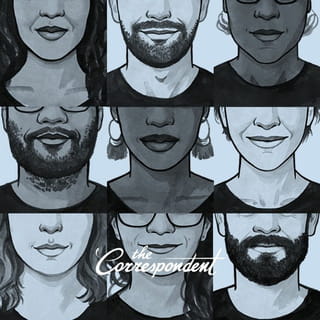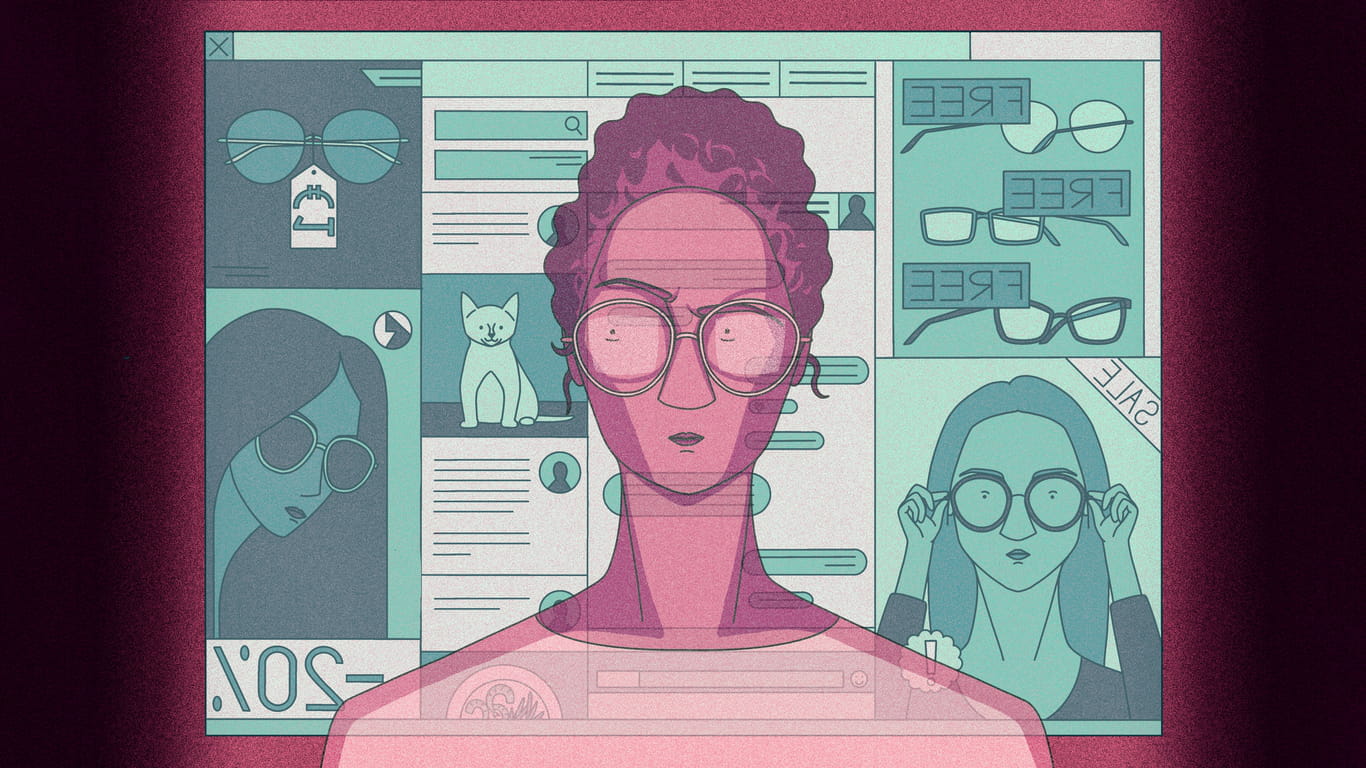
In front of a sea of coders sitting on folding chairs, their laptops on folding tables, a man appears on a purpley-blue lit stage.
“Seven hundred blockchaingers,” the man shouts at his audience. He points at each programmer in the room. “Machine-to-machine learning … ” And then, at the top of his voice: “Energy transition! Health! Public safety and security! Future of pensions!”
We are at the Blockchaingers Hackathon 2018 in Groningen, the Netherlands. And something really, really big is happening here, according to the speakers. Earlier on, a film trailer voice asked those present if they could imagine that right here, right now, in this room, they were about to find solutions that would change “a billion lives”. A planet spontaneously combusted in the accompanying video.
And then the Dutch state secretary for the Interior, Raymond Knops arrived, decked out in tech couture: a black hoodie. He’s here as a “super accelerator” (whatever that means). “Everyone senses that blockchain is going to change government drastically,” the state secretary said.

I’ve been hearing a lot about blockchain in the last few years. I mean, who hasn’t? It’s everywhere.
I’m sure I wasn’t the only one who thought: but what is it then, for God’s sake, this whole blockchain thing? And what’s so terribly revolutionary about it? What problem does it solve?
That’s why I wrote this article. I can tell you upfront, it’s a bizarre journey to nowhere. I’ve never seen so much incomprehensible jargon to describe so little. I’ve never seen so much bloated bombast fall so flat on closer inspection. And I’ve never seen so many people searching so hard for a problem to go with their solution.
‘Agents of change’ in a small Dutch town
They knew nothing about the blockchain yet in Zuidhorn, a town with just under 8,000 people in the north-east of the Netherlands.
“What we did know is that it’s coming for us and that it’s disruptive,” a civil servant from the town told a Dutch weekly news magazine. “We could sit back and wait, or choose to move forwards.”
In Zuidhorn they decided to move forwards. A municipal poverty aid package for children would “be put on the blockchain”. Maarten Velthuijs, a student and blockchain enthusiast, was given an internship with the municipality.
His first job was to explain what blockchain is. When I asked him, he said it is “a kind of system that can’t be stopped”, that it’s “actually a force of nature”, or rather, “a decentralised consensus algorithm”. OK, it’s hard to explain, he conceded eventually. “I said to Zuidhorn: ‘I’ll just build you an app, then you’ll understand’.”
So he did.
His first job was to explain what blockchain is ... OK, it’s hard to explain, he conceded eventually
The children’s aid package gives families living in poverty the right to a bicycle, trips to the theatre and the cinema, and so on. In the past, that was a nightmare of bureaucracy, receipts and documentation. But thanks to Velthuijs’s app it became simple: you scan your code in the shop, you get your bike, and the shopkeeper gets their money.
Suddenly, the tiny town was proclaimed “one of the international forerunners in blockchain technology”. There was national media attention and even awards: they won a prize for pioneers in municipal work and received nominations for an IT project award and a civil service award.
Local administrators became more and more enthusiastic. Velthuijs and his team of “students” were the ones who shaped this new world. But that term didn’t show enough respect. In Zuidhorn some people already preferred to call them “agents of change”.
How does it work?
OK, OK, agents of change, revolution, nothing can stay the same. But what is blockchain?
At its core, blockchain is a glorified spreadsheet (think: Excel with one table). In other words, a new way to store data. In traditional databases there’s usually one person who’s in charge, who decides who can access and input data, who can edit and remove it. That’s different in a blockchain. Nobody’s in charge, and you can’t change or delete anything, only view and input data.
The first, best-known – and practically only – use of blockchain technology is bitcoin, the digital currency that allows you to transfer money from A to B without the involvement of a bank.


How does this work? Imagine that money needs to be transferred from Jesse to James. Banks know how to do this. I ask the bank to send money to James. The bank carries out the necessary checks – Is there enough money in the account? Does the account number exist? – and taps into its own database: send money from Jesse to James.
This is slightly trickier with bitcoin. You announce the payment request in a kind of giant chat: one bitcoin from Jesse to James! Then there are users (so-called miners) who collect various transactions in little blocks.
In order to add these blocks of transactions to the public blockchain ledger, the miners have to crack a complicated puzzle (actually, they have to guess a very large number from a very, very long list of numbers). Solving that puzzle takes about 10 minutes – and if it’s solved more quickly, for instance because people use more hardware to solve the puzzle, it automatically becomes more difficult.
Once it’s been solved, the miners add the transactions to the latest version of the blockchain ledger, in the version they have saved locally. They post an announcement in the chat: we solved it, see! Everyone can verify that the solution is correct, and everyone updates their own blockchain ledger. Voila! Transaction complete. As a reward for their work, the miners receive a handful of bitcoin.
What’s with the puzzle?
Why is there a puzzle? If everyone behaved honourably, you wouldn’t need it. But imagine someone wanted to spend the same money twice. I tell both James and John: I’m giving you this bitcoin. Someone needs to check if that’s possible. And miners do the work that a bank usually does: they decide which transactions can be carried out.
Of course, a miner could try to scam the system by being in cahoots with me. But other people can see straight away if I spend the same money twice, and they can refuse to update the blockchain. So a malicious miner who’s done his best to solve the puzzle gets nothing. Because it’s so hard to guess the number, it pays to stick to the rules.

This is pretty inefficient. And it would be a lot less complicated if you trusted someone to manage your data (a bank, for instance). But that’s not what Satoshi Nakamoto did, which is what the inventor of bitcoin calls himself. He thought banks were bad news. They can make money disappear from your account. So he invented bitcoin.
And bitcoin works, it exists, and according to the latest count, there are nearly 1,855 other bitcoin-like currencies out there.
And yet, bitcoin isn’t an unqualified success. There are very few shops that accept the digital currency – and rightly so. It’s very slow (sometimes a transaction takes nine minutes, sometimes nine days!), a lot of hassle (try it for yourself – cutting open hard plastic packaging with scissors is more user friendly), and very unstable (its price rose to €17,000 euros; dropped to €3,000; rose again to now €10,000).
Bitcoin isn’t an unqualified success. There are very few shops that accept the digital currency – and rightly so
Not only that, but the decentralised utopia that Nakamoto dreamed about, namely avoiding trusted third parties, is still far out of reach. Ironically, there are now three mining pools – a type of company that builds rooms full of servers in Alaska and other locations way up above the Arctic circle – which are responsible for more than half of all the new bitcoin (and also for checking payment requests).
For the time being, bitcoin has been especially successful for speculation. Someone who happened to buy 20 or 20 euros’ worth of the cryptocurrency in its early days now has enough money for several round-the-world trips.
Which brings us to the blockchain. Because impenetrable technology that brings sudden wealth is a tried and tested formula for hype. Councillors, managers and consultants read about a mysterious currency in the papers that turns people into millionaires. We need to get in on that, they think. But you can’t do much with bitcoin. But blockchain, on the other hand: it’s the technology behind bitcoin, which makes it cool.
Blockchain generalises the bitcoin pitch: let’s not just get rid of banks, but also the land registry, voting machines, insurance companies, Facebook, Uber, Amazon, the Lung Foundation, the porn industry and government and businesses in general. They are superfluous, thanks to the blockchain. Power to the users!
A €600m industry
Meanwhile, Bloomberg estimates the worldwide blockchain industry at around $700m (over €600m). Large companies like IBM, Microsoft and Accenture have entire divisions dedicated to this revolutionary technology. In the Netherlands there are all sorts of subsidies available for blockchain innovation.
The only thing is that there’s a huge gap between promise and reality. It seems that blockchain sounds best in a PowerPoint slide. Most blockchain projects don’t make it past a press release, an inventory by Bloomberg showed. The Honduran land registry was going to use blockchain. That plan has been shelved. The Nasdaq was also going to do something with blockchain. Not happening. The Dutch Central Bank then? Nope. Out of over 86,000 blockchain projects that had been launched, 92% had been abandoned by the end of 2017, according to consultancy firm Deloitte.
A bank can reverse a payment request. This is impossible for bitcoin and other cryptocurrencies
Why are they deciding to stop? Enlightened – and thus former – blockchain developer Mark van Cuijk explained: “You could also use a forklift to put a six-pack of beer on your kitchen counter. But it’s just not very efficient.”
I’ll list a few of the problems. Firstly: the technology is at loggerheads with European privacy legislation, specifically the right to be forgotten. Once something is in the blockchain, it cannot be removed. For instance, hundreds of links to child abuse material and revenge porn were placed in the bitcoin blockchain by malicious users. It’s impossible to remove those.
Also, in a blockchain you aren’t anonymous, but “pseudonymous”: your identity is linked to a number, and if someone can link your name to that number, you’re screwed. Everything you got up to on that blockchain is visible to everyone.
The presumed hackers of Hillary Clinton’s email were caught, for instance, because their identity could be linked to bitcoin transactions. A number of researchers from Qatar University were able to ascertain the identities of tens of thousands of bitcoin users fairly easily through social networking sites. Other researchers showed how you can de-anonymise many more people through trackers on shopping websites.
The fact that no one is in charge and nothing can be modified also means that mistakes cannot be corrected. A bank can reverse a payment request. This is impossible for bitcoin and other cryptocurrencies. So anything that has been stolen will stay stolen. There is a continuous stream of hackers targeting bitcoin exchanges and users, and fraudsters launching investment vehicles that are in fact pyramid schemes. According to estimates, nearly 15% of all bitcoin has been stolen at some point. And it isn’t even 10 years old yet.
Bitcoin and Ethereum use the same amount of energy as the whole of Austria
And then there’s the environmental problem. The environmental problem? Aren’t we talking about digital coins? Yes, which makes it even stranger. Solving all those complex puzzles requires a huge amount of energy. So much energy that the two biggest blockchains in the world – bitcoin and Ethereum – are now using up the same amount of electricity as the whole of Austria. Carrying out a payment with Visa requires about 0.002 kilowatt-hours; the same payment with bitcoin uses up 906 kilowatt-hours, more than half a million times as much, and enough to power a two-person household for about three months.
And the environmental problem is only going to grow. As miners put more effort into solving the puzzles (ie, building more of those dark server caves in Alaska), the puzzles will automatically become more difficult, requiring more calculation power. It’s an endless, pointless arms race in order to facilitate the same number of transactions with more and more energy.

And for what? This is actually the most important question: what problem does blockchain actually solve? OK, so with bitcoin, banks can’t just remove money from your account at their own discretion. But does this really happen? I have never heard of a bank simply taking money from someone’s account. If a bank did something like that, they would be hauled into court in no time and lose their license. Technically it’s possible; legally, it’s a death sentence.
Of course scammers are active everywhere. People lie and cheat. But the biggest problem is scams by data suppliers (for instance: someone secretly registers a hunk of horse meat as beef), not by data administrators (for instance: a bank makes money disappear).
Some people have suggested putting the Land Registry on the blockchain. That would solve all kinds of problems in countries with corrupt administrations. Take Greece, for example, where one in five buildings is not registered. Why are these buildings not registered? Because the Greeks just start building and then there’s suddenly a house that’s not in the Land Registry.
Except a blockchain can’t do anything about that. A blockchain is a database – it’s not a self-regulating system that checks all data for correctness, let alone one that calls a halt to unauthorised building works. The same rules apply for blockchain as for any database: if people put garbage into it, what comes out is also garbage.
Or as Bloomberg columnist Matt Levine wrote: “My immutable unforgeable cryptographically secure blockchain record proving that I have 10,000 pounds of aluminium in a warehouse is not much use to a bank if I then smuggle the aluminium out of the warehouse through the back door.”
Data should reflect reality, but sometimes reality changes and the data stays the same. That’s why we have notaries, supervisors, lawyers – actually, all those boring people that blockchain thinks it can do without.
Very little blockchain under the hood
So what about that pioneering town of Zuidhorn, wasn’t blockchain successful there?
Well, not quite. I had a look at GitHub – a site where programmers post their software – and there was very little resembling blockchain under the hood of the children’s aid package app. At any rate, there was one lonely miner working away, on a server, not connected to the internet, for internal research. But what those families living in poverty and shopkeepers were using was a very simple app, using very simple code, running on very simple databases.

I called Maarten Velthuijs.
Hey, I noticed that your app doesn’t actually need blockchain at all.
Velthuijs: “That’s right.”
But isn’t it strange that you won all those awards, even though you aren’t actually using the blockchain?
Him: “Yes, it’s weird.”
So how is it possible?
Him: “I don’t know. We keep trying to tell people, but it doesn’t seem to stick. You’re calling me about it again now … ”
So where is the blockchain?
Zuidhorn is no exception. If you look carefully, you’ll see that there are all kinds of blockchain experiments that only contain a suggestion of blockchain now.
Take My Care Log, another one of those award-winning experiments, this time in maternity care. All Dutch people with a newborn baby are allocated a certain amount of maternity care. Just like the children’s aid package in Zuidhorn, this was a bureaucratic nightmare, but now there’s an app on your smartphone where you can log how much care you have received and see how much you have left.
The final report shows that My Care Log doesn’t use any of the features that make blockchain so unique. A number of third parties were identified beforehand as exclusive miners: in other words, they have the right to veto any maternity care data logged. Better for the environment and in accordance with privacy regulations, the report notes. But wasn’t that the whole point of blockchain, that you could do without these trusted third parties? So what are they doing here?
If you ask me, they’re building a completely normal, run-of-the-mill database, but extremely inefficiently. Once you’ve cut through all the jargon, the report turns out to be a boring account of database architecture. They write about a distributed ledger (that’s a shared database), about smart contracts (that’s an algorithm) and about proof of authority (that’s the right to veto whatever is entered in the database).
Merkle trees (a way of unlinking data from checks on that data – long story) are the only blockchain element to make the final cut. And that’s perfectly good technology, nothing wrong with it. The only thing is that Merkle trees have existed since 1979 and have been used for years, for instance in Git, a version-control system (which is used by pretty much every software developer in the world). They are not unique to the blockchain.
There’s a market for magic, and that market is big
I already said it earlier: this story was a bizarre journey to nowhere.
While writing, I decided to have a chat with one of our developers. There are actually real, live developers roaming around our editorial office. This developer, Tim Strijdhorst, didn’t know much about blockchain. But he did tell me something else.
“I work with code, so people see me as a magician,” he said proudly. It was always rather surprising to him – a magician? He spends half his time yelling at his screen in frustration, while he programmes strips of duct tape to repair creaky PHP script from years and years ago.
What Tim meant was that ICT is like the rest of the world – a big old mess.
And that’s something that we – outsiders, laypeople, non-tech geeks – simply refuse to accept. Councillors and managers think that problems – however large and fundamental they are – evaporate instantaneously thanks to technology they’ve heard about in a fancy PowerPoint presentation. How will it work? Who cares! Don’t try to understand it, just reap the benefits!


This is the market for magic, and that market is big. Whether it’s about blockchain, big data, cloud computing, AI or other buzzwords.
Still, this kind of magical thinking might be necessary sometimes. Take the maternity care experiment. OK, so that’s not going anywhere. But Hugo de Kaat from insurance company VGZ, which took part in the study, says that “Facet, the biggest software provider in maternity care, has been mobilised by our experiment.” They are going to make a similar app, but without all the fuss, just traditional technology.
And Maarten Velthuijs, could he ever have made that wonderful children’s aid package app without dousing it in blockchain? No, he admits. But he is anything but dogmatic about the technology. “Look, before we could fly, things also didn’t always work out either,” Velthuijs says. “Have a look on YouTube, there’s a man who just jumps off the Eiffel Tower with a home-made parachute! Yeah, he fell to his death of course. But we need those people, too.”
So if Maarten manages to make it work with blockchain – great! And if he doesn’t manage with blockchain, that’s good too. At least he will have learned something about what works and what doesn’t work. And the town has a nice app to show for it.
Maybe this is blockchain’s greatest merit: it’s an awareness campaign, albeit an expensive one. “Back-office management” isn’t an item on the agenda in board meetings, but “blockchain” and “innovation” are.
Thanks to all the hype, Maarten was able to develop his children’s aid package app, maternity care providers began talking to each other again, and many businesses and local authorities were gently made aware of their ramshackle data management.
Yes, it took a few wild, unmet promises, but the result is that administrators are now interested in the boring subjects that help make the world run a bit more efficiently – nothing spectacular, just a bit better.
The smartest thing about blockchain, Matt Levine wrote, is that the rest of the world was forced to “pay attention to those back-office technology upgrades, and to think that they might be revolutionary”.
This piece first appeared on De Correspondent. It was translated from the Dutch by Hannah Kousbroek.
 About the images
Visual artist Sjoerd Knibbeler likes experimenting in his studio with all kinds of volatile substances. He made the images with this article – the series Current Studies – with the help of fans, leaf blowers and vacuum cleaners. The result is a series of photos that make the seemingly invisible visible: the wind. His mysterious images move on a boundary between real and unreal, and suddenly transform an inflated plastic bag or a plastic plate with smoke into a magical scene. (Lise Straatsma, image editor)
About the images
Visual artist Sjoerd Knibbeler likes experimenting in his studio with all kinds of volatile substances. He made the images with this article – the series Current Studies – with the help of fans, leaf blowers and vacuum cleaners. The result is a series of photos that make the seemingly invisible visible: the wind. His mysterious images move on a boundary between real and unreal, and suddenly transform an inflated plastic bag or a plastic plate with smoke into a magical scene. (Lise Straatsma, image editor)
Dig deeper
 The new dot com bubble is here: it’s called online advertising
In 2018 $273bn was spent on digital ads globally. We delve into the world of clicks, banners and keywords to find out if any of it is real. What do we really know about the effectiveness of digital advertising?
The new dot com bubble is here: it’s called online advertising
In 2018 $273bn was spent on digital ads globally. We delve into the world of clicks, banners and keywords to find out if any of it is real. What do we really know about the effectiveness of digital advertising?


